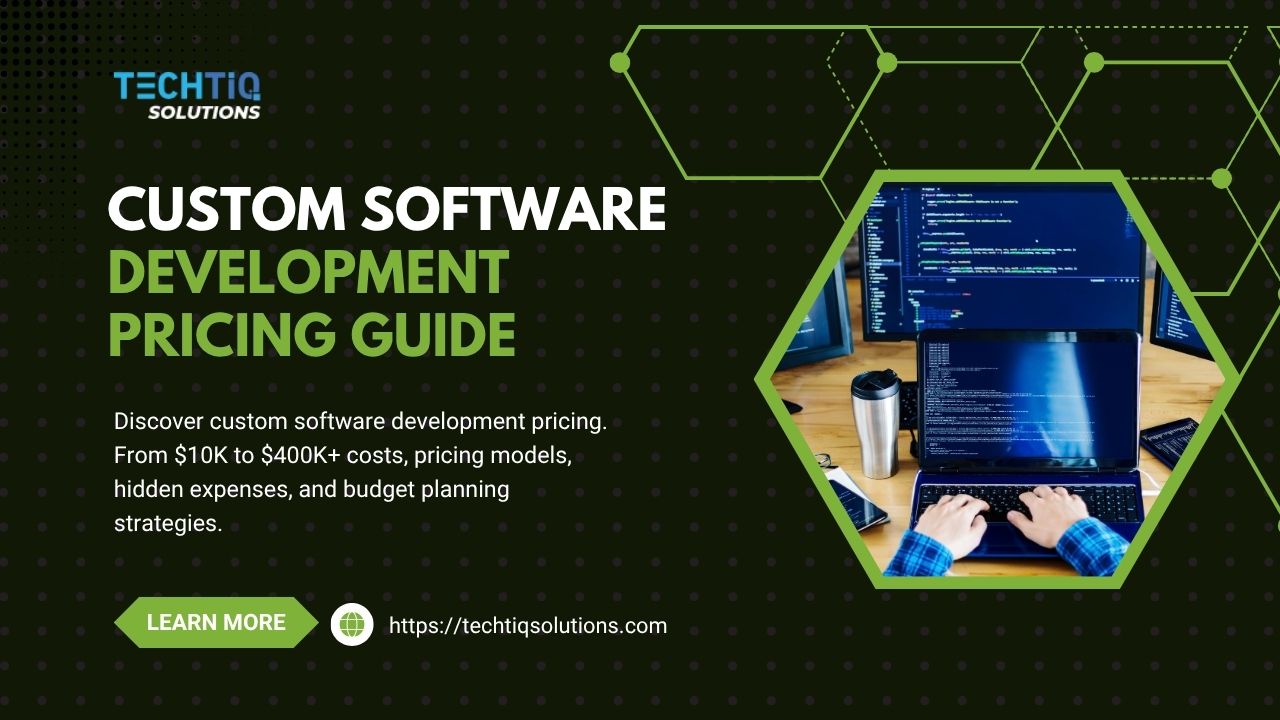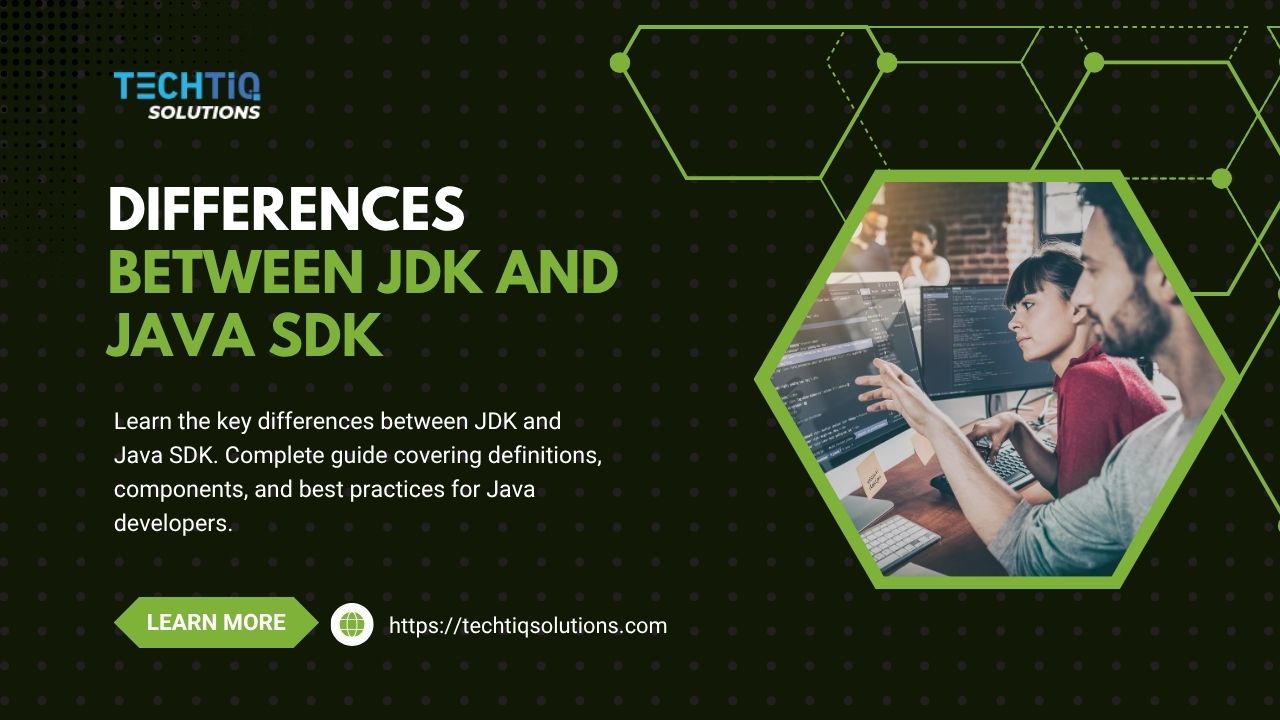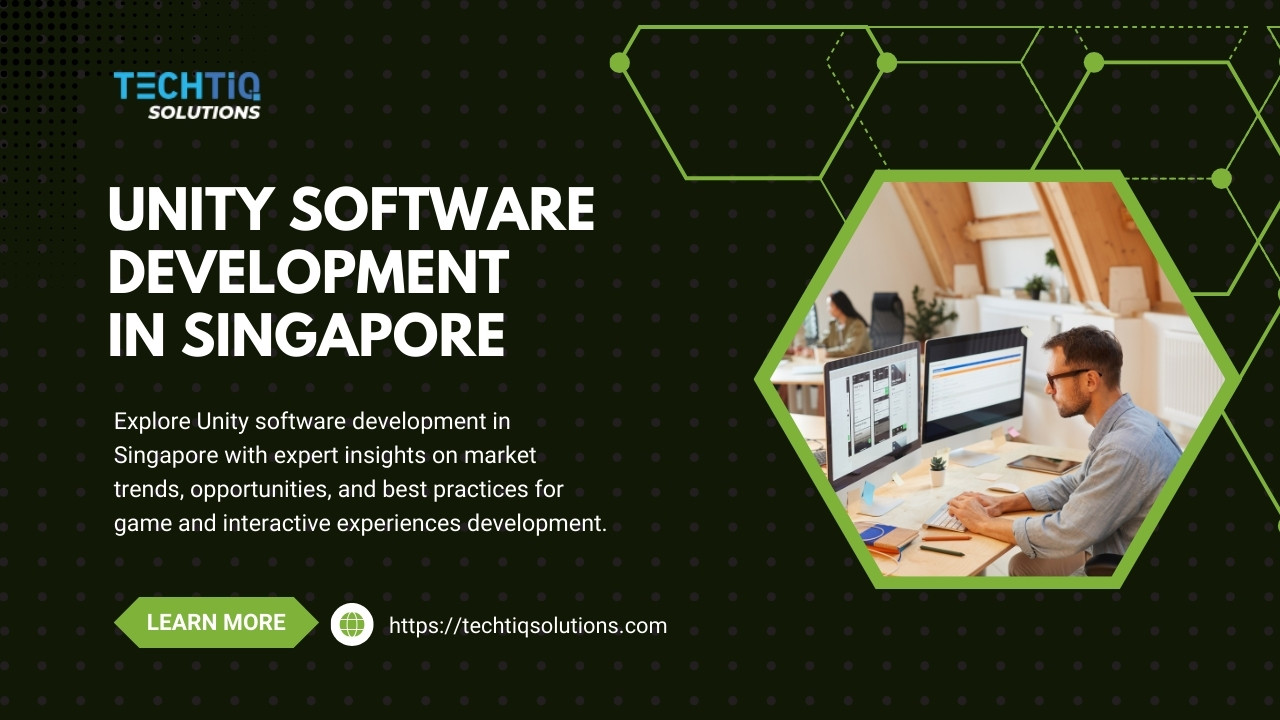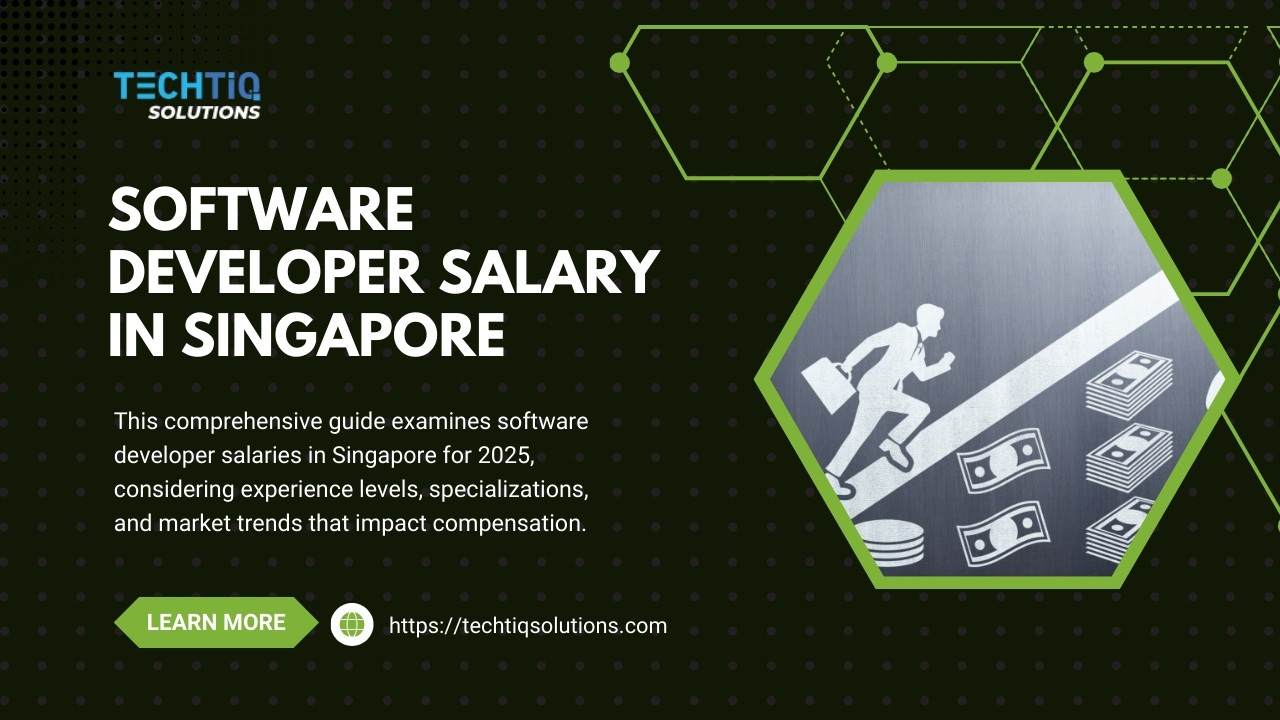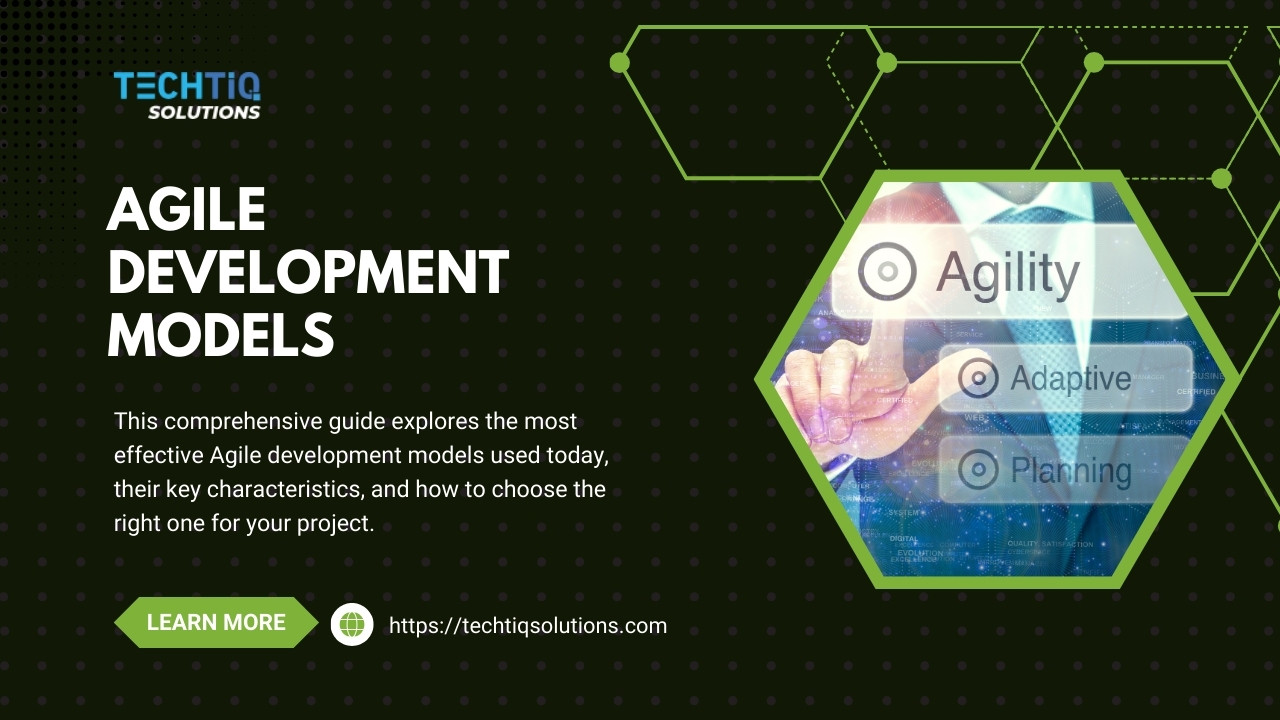Ever wondered why so many software projects fail to meet deadlines or end up with features nobody wants? Before the Agile Manifesto came along, that was the norm rather than the exception. Traditional development approaches like waterfall methodology often resulted in inflexible products that took too long to build and missed the mark on customer needs.
In this comprehensive guide, we’ll explore how the Agile Manifesto revolutionized software development and why its principles remain crucial for today’s businesses. You’ll discover practical applications of Agile methodologies and see real-world examples of how TechTIQ Solutions implements these principles to deliver successful projects through iterative development.
Key Takeaways
The Agile Manifesto established four core values and twelve principles that prioritize flexibility, collaboration, and customer satisfaction
Agile methodologies like Scrum, Kanban, and XP offer structured frameworks for implementing Agile principles through sprint planning and backlog refinement
Modern software development teams benefit from Agile through faster delivery, better product quality, and increased stakeholder satisfaction
TechTIQ Solutions has successfully applied Agile principles across diverse projects, from mobile apps to enterprise systems
Implementing Agile requires cultural shifts and leadership support, not just process changes
The AGILE Implementation Framework
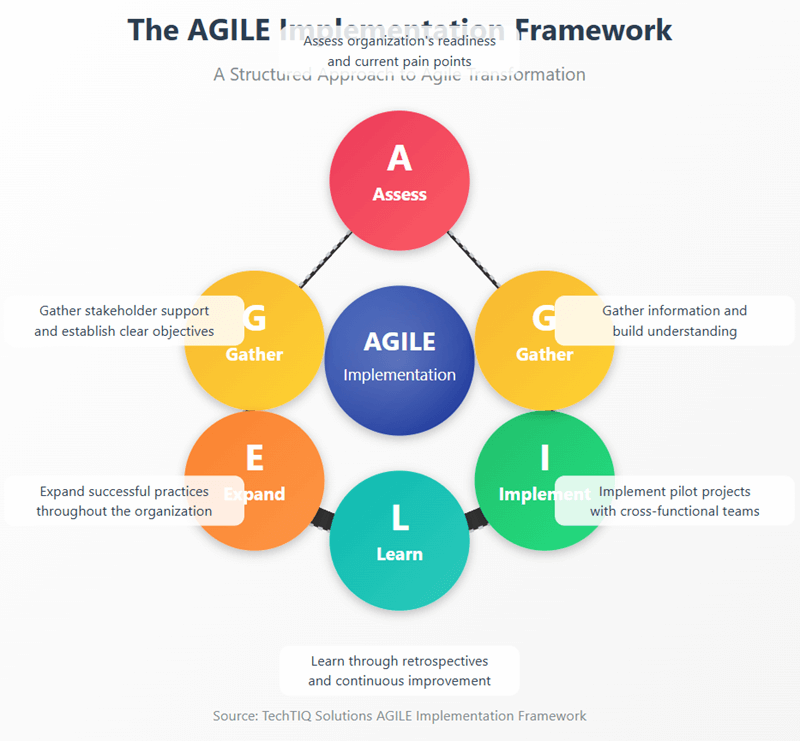
To help organizations successfully adopt Agile principles, we’ve developed the AGILE Implementation Framework that breaks down the process into manageable steps:
Assess your organization’s readiness and current pain points
Gather stakeholder support and establish clear objectives
Implement pilot projects with cross-functional teams
Learn through regular retrospectives and continuous improvement
Expand successful practices throughout the organization
This framework provides a structured approach to Agile transformation that balances immediate results with sustainable long-term change.
What Is the Agile Manifesto?
The Agile Manifesto is a set of values and principles for software development that was created in February 2001 when 17 software developers met at a ski resort in Snowbird, Utah. These developers, including figures like Kent Beck, Martin Fowler, and Bob Martin, were frustrated with traditional development approaches and wanted to establish a better way to build software through adaptive planning.
The result was a simple but powerful document consisting of four core values and twelve supporting principles that has transformed how development teams approach software development worldwide.
The Four Core Values of the Agile Manifesto
The Agile Manifesto states:
“We are uncovering better ways of developing software by doing it and helping others do it. Through this work we have come to value:
Individuals and interactions over processes and tools
Working software over comprehensive documentation
Customer collaboration over contract negotiation
Responding to change over following a plan
That is, while there is value in the items on the right, we value the items on the left more.”
These values don’t dismiss processes, documentation, contracts, or plans – they simply emphasize that the human and practical elements on the left provide more value in incremental development.
The Twelve Principles Behind the Agile Manifesto
The Agile Manifesto is supported by twelve principles that guide teams in implementing Agile practices:
Customer satisfaction through early and continuous delivery of valuable software
Welcome changing requirements, even late in development
Deliver working software frequently, with a preference for shorter timescales
Business people and developers must work together daily
Build projects around motivated individuals and trust them to get the job done
The most effective method of communication is face-to-face conversation
Working software is the primary measure of progress
Agile processes promote sustainable development with a constant pace
Continuous attention to technical excellence and good design
Simplicity is essential
The best architectures and designs emerge from self-organizing teams
Teams regularly reflect on and adjust their behavior to become more effective
These principles provide practical guidance for implementing the Agile values within cross-functional teams.
Agile Methodologies Comparison Table
|
Methodology |
Best For |
Key Features |
Typical Timeframes |
Team Structure |
|
Scrum |
Complex product development with defined features |
Sprint-based, regular ceremonies, defined roles |
2-4 week sprints |
Product Owner, Scrum Master, Development Team |
|
Kanban |
Support, maintenance, continuous flow work |
Visual boards, WIP limits, continuous delivery |
Continuous flow |
No defined roles, flexible structure |
|
XP |
Projects requiring high code quality |
Pair programming, TDD, continuous integration |
1-3 week iterations |
Self-organizing with customer representation |
|
Lean |
Eliminating waste and optimizing flow |
Value stream mapping, eliminating waste |
Varies |
Cross-functional teams |
Popular Agile Methodologies
While the Agile Manifesto provides values and principles, it doesn’t specify how to implement them. Various Agile methodologies have emerged to provide frameworks for putting these principles into practice through empirical process control.
Scrum
Scrum is perhaps the most widely adopted Agile methodology, used by over 66% of Agile teams according to the 15th State of Agile Report. It organizes work into time-boxed iterations called “sprints,” typically lasting 2-4 weeks.
Key elements of Scrum include:
Sprint Planning: The team decides what work to complete in the upcoming sprint
Daily Standups: Brief daily meetings where team members share progress and obstacles
Sprint Review: A demonstration of completed work to stakeholders
Sprint Retrospective: A team reflection on what went well and what could be improved
Roles: Product Owner (represents stakeholder interests), Scrum Master (facilitates the process), and Development Team (builds the product)
Scrum works well for complex projects with changing requirements and helps teams deliver value incrementally while maintaining focus through velocity measurements.
Kanban
Kanban emphasizes visualizing work, limiting work in progress, and maximizing flow. Unlike Scrum, it doesn’t use fixed time iterations but focuses on continuous delivery and lead time optimization.
Key elements of Kanban include:
Kanban Board: A visual representation of work items moving through workflow stages
Work in Progress (WIP) Limits: Restrictions on how many items can be in each workflow stage
Flow Metrics: Measurements like cycle time and throughput to optimize workflow
Kanban is particularly effective for maintenance work, support tasks, or situations where priorities frequently change, helping teams achieve continuous flow.
Extreme Programming (XP)
XP focuses on technical excellence and quality code through practices like:
Pair Programming: Two developers work together at one computer
Test-Driven Development (TDD): Writing tests before writing code
Continuous Integration: Frequently merging code changes into a shared repository
Small Releases: Delivering valuable features in small increments
Simple Design: Creating the simplest solution that meets requirements
XP is ideal for projects requiring high-quality code and can work well alongside other methodologies like Scrum, particularly for complex problem-solving.
Lean Software Development
Adapted from Toyota’s manufacturing principles, Lean Software Development focuses on eliminating waste and optimizing the whole system. Its principles include:
Eliminate waste
Build quality in
Create knowledge
Defer commitment
Deliver fast
Respect people
Optimize the whole
Lean thinking can complement any Agile methodology by focusing on efficiency and value creation through value stream mapping.
Benefits of Implementing Agile Principles
Organizations that effectively implement Agile principles typically experience numerous benefits across their software development processes.
Faster Time to Market
By delivering working software in small, frequent increments, Agile teams can:
Release valuable features earlier (sometimes in weeks instead of months or years)
Gather user feedback before the entire product is complete
Generate revenue or business value sooner
Adjust to market changes more quickly through feature prioritization
A 2020 McKinsey report found that Agile teams can deliver products to market 30-50% faster than traditional teams following sequential development.
Improved Product Quality
Agile practices contribute to higher quality products through:
Regular review and testing of small increments
Early bug detection and fixing
Continuous integration and deployment practices
Close collaboration between developers and testers
These practices reduce defects and rework while ensuring the product meets user expectations through robust acceptance criteria.
Enhanced Customer Satisfaction
Agile’s focus on customer collaboration leads to:
Products that better meet user needs
Regular opportunities for customer feedback
Ability to pivot based on changing requirements
Transparency throughout the development process
According to the 15th State of Agile Report, 64% of organizations implementing Agile reported improved customer/user satisfaction through user stories that directly address user needs.
Higher Team Morale and Productivity
Agile principles emphasize trust, autonomy, and sustainable pace, resulting in:
More engaged and empowered team members
Better work-life balance
Clearer purpose and connection to value creation
Opportunities for continuous learning and improvement
Teams working in Agile environments often report higher satisfaction and lower turnover rates thanks to servant leadership approaches.
Better Risk Management
Agile approaches help manage risk through:
Early identification of technical and business challenges
Incremental investment rather than all-or-nothing commitments
Regular inspection and adaptation
Prioritization of high-value, high-risk items early in development
These practices reduce the likelihood of catastrophic project failures that were common with traditional approaches like the waterfall model.
How TechTIQ Solutions Implements Agile Principles
At a tech company like TechTIQ Solutions, Agile principles aren’t just buzzwords, they’re integrated into the company’s development practices across various projects. Let’s look at some real-world applications:
Case Study: Bike To Work Mobile App Development
TechTIQ Solutions developed Bike To Work, a GPS fitness-tracking app for iOS and Android that allows users to track fitness activities, view statistics, and share content with friends.
Agile Application:
Sprint-based delivery: The team broke down the complex GPS tracking and social features into manageable two-week sprints
Daily collaboration: Despite working with a backend team in Norway with language barriers, TechTIQ established effective communication channels and regular sync-ups
Technical excellence: The team solved challenging GPS tracking accuracy issues through iterative development and testing
Customer collaboration: Regular demos and feedback sessions with the client ensured the app met user expectations
Results:
Successful delivery of a feature-rich fitness tracking app
High-accuracy GPS tracking implementation
Smooth integration with the backend system despite communication challenges
Positive user feedback on the app’s performance and usability
“Working with the Bike To Work project presented unique communication challenges due to language barriers, but our Agile approach helped us overcome these obstacles through visual communication tools and regular demonstrations of working features.” – TechTIQ Project Manager
Case Study: Mobile Team Manager
TechTIQ developed Mobile Team Manager, a comprehensive field and office management suite for service-based businesses.
Agile Application:
Cross-functional teams: Developers, designers, and quality assurance specialists worked together daily
Continuous delivery: New features were deployed frequently, allowing for early testing and feedback
Self-organizing teams: Team members collaboratively solved complex scheduling and offline synchronization challenges
Embracing change: Requirements evolved throughout the project, and the team adapted their approach accordingly
Results:
Development of a complex system handling job scheduling, resource management, and real-time data synchronization
Implementation of offline mode with auto-sync capabilities
Integration with multiple third-party services
High client satisfaction with the team’s responsiveness to changing needs
These case studies demonstrate how TechTIQ Solutions applies Agile principles in practice, resulting in successful project outcomes and satisfied clients through sprint reviews and retrospectives.
Practical Steps for Implementing Agile
1. Start with a pilot project Choose a project that’s important but not critical, where you can test Agile practices with a cross-functional team. This limits risk while allowing for learning.
2. Focus on a basic Agile practice set Begin with foundational practices:
Daily standups (15 minutes maximum)
User stories for requirements
Visual task board
1-2 week iterations
End-of-iteration reviews
3. Identify and remove obstacles Regularly discuss what’s slowing the team down and take action to remove these impediments. This might include:
Procurement processes that take too long
Approval chains that delay decisions
Dependencies on teams or individuals outside the Agile process
4. Measure both process and outcomes Track metrics in two categories:
Process metrics: Velocity, cycle time, team morale
Outcome metrics: Customer satisfaction, value delivered, quality
5. Expand gradually As your pilot succeeds, gradually introduce Agile to other teams, sharing lessons learned and adapting the approach based on your organization’s specific context.
Common Challenges When Adopting Agile
While the benefits of Agile are significant, organizations often face challenges when implementing these principles.
Cultural Resistance
Traditional organizations may struggle with the cultural shift required for Agile, including:
Moving from command-and-control to servant leadership
Embracing transparency and constructive conflict
Accepting uncertainty and experimentation
Valuing collaboration over individual achievement
Solution: Start with small changes, provide leadership training, celebrate early wins, and gradually expand Agile practices as the culture evolves through change management.
Misunderstanding Agile Principles
Some organizations implement Agile practices mechanically without understanding the underlying principles:
Following ceremonies without embracing the values
Using Agile terminology while maintaining waterfall thinking
Treating the methodology as an end rather than a means
Cherry-picking practices without a coherent approach
Solution: Invest in proper Agile education that emphasizes principles over practices, and work with experienced Agile coaches who can guide the transformation through incremental change.
Scaling Challenges
As organizations grow, they face challenges in scaling Agile practices:
Coordinating multiple teams working on the same product
Maintaining consistent practices across distributed teams
Aligning Agile teams with traditional departments
Balancing autonomy with organizational alignment
Solution: Consider frameworks designed for scaling like SAFe, LeSS, or Nexus, but adapt them to your specific context rather than implementing them rigidly to maintain business agility.
Incomplete Organizational Support
Agile teams often struggle when the broader organization doesn’t support Agile principles:
Traditional budgeting processes requiring detailed upfront planning
HR systems that don’t recognize Agile roles or reward team achievements
Dependencies on non-Agile teams or departments
Leadership that demands predictability over adaptability
Solution: Create an Agile transformation roadmap that addresses all aspects of the organization, not just development teams, and secure executive sponsorship for the journey through organizational change.
Evolving Agile for Modern Software Development
While the Agile Manifesto’s core principles remain relevant, their application continues to evolve with changing technologies and business environments.
DevOps and Continuous Delivery
DevOps practices extend Agile principles through:
Automated testing, integration, and deployment pipelines
Infrastructure as code and cloud-native architectures
Close collaboration between development and operations
Monitoring and feedback loops in production
These practices enable truly continuous delivery of value, sometimes multiple times per day, which was rare when the Agile Manifesto was written, creating a continuous improvement cycle.
Remote and Distributed Teams
Modern teams are increasingly distributed, requiring adaptations to Agile practices:
Virtual collaboration tools replacing physical task boards
Asynchronous communication complementing real-time interactions
Documentation gaining importance for knowledge sharing
Deliberate team-building efforts to maintain culture
The principle of face-to-face communication remains valuable but must be reimagined for global teams and remote work environments.
Product-Centric Organizations
Many organizations are shifting from project-based to product-based thinking:
Stable, long-lived teams responsible for products rather than projects
Continuous evolution of products based on user feedback and metrics
Focus on outcomes and impact rather than output and features
Product managers working closely with development teams
This approach aligns well with Agile principles by maintaining customer focus and enabling sustainable development through product backlogs.
Integrating Design Thinking
Design thinking complements Agile by:
Deepening understanding of user needs before development
Creating rapid prototypes to test assumptions
Emphasizing empathy and user research
Encouraging creative problem-solving
Organizations increasingly combine design thinking with Agile development to ensure they’re building the right products in the right way, enhancing the overall user experience.
Implementing Agile in Your Organization
If you’re considering implementing or improving Agile practices in your organization, consider these practical steps:
Start With Why
Before adopting any Agile methodology:
Identify the specific business problems you’re trying to solve
Clarify what success looks like for your organization
Understand how Agile principles might address your challenges
Set realistic expectations about the transformation journey
This foundation will help you adapt Agile practices to your context rather than following a generic approach, creating a clear value proposition.
Choose the Right Methodology
Different Agile methodologies suit different contexts:
Scrum works well for complex product development with stable teams
Kanban fits maintenance work, support, or situations with frequent priority changes
XP addresses technical quality concerns and may complement other methods
Hybrid approaches can be tailored to your specific needs
Start with a recognized framework but be prepared to adapt it as you learn through continuous experimentation.
Invest in Training and Coaching
Successful Agile implementation requires:
Proper training for all team members and stakeholders
Experienced coaches to guide initial implementation
Regular reflection and adjustment
Communities of practice to share learning
External expertise can accelerate your learning curve and help avoid common pitfalls, developing true agile mindsets.
Measure and Adapt
Track your Agile journey through:
Delivery metrics like cycle time, throughput, and quality
Business outcomes like customer satisfaction and value delivered
Team health indicators like engagement and sustainability
Regular retrospectives at team and organizational levels
Use these insights to continuously improve your approach, just as the Agile Manifesto suggests, creating a feedback loop for improvement.
10-Point Agile Readiness Checklist
Before diving into Agile adoption, assess your organization’s readiness with this checklist:
Leadership Support: Do executives understand and support Agile principles?
Team Autonomy: Can teams make decisions about how they work?
Customer Access: Do teams have regular access to end-users or customers?
Technical Practices: Are continuous integration and automated testing possible?
Physical Environment: Does the workspace support collaboration?
Organizational Structure: Can cross-functional teams be formed?
Funding Model: Can projects be funded incrementally rather than all at once?
Risk Tolerance: Is there acceptance that not everything can be known upfront?
Learning Culture: Is learning from failure encouraged?
Change Appetite: Is there willingness to change established processes?
The more items you can check off this list, the better positioned you are for Agile success.
Conclusion
The Agile Manifesto’s four values and twelve principles have transformed software development over the past two decades, enabling teams to deliver better products, adapt to change, and work more effectively together. While frameworks and practices continue to evolve, the core principles remain as relevant today as they were in 2001.
Whether you’re building tailored business applications or large-scale organizational systems, embracing Agile principles can help you deliver more value to your customers, create a more engaging work environment, and adapt to the rapidly changing technology landscape.
As demonstrated by TechTIQ Solutions’ successful implementations across diverse projects, Agile isn’t just a methodology – it’s a mindset that enables teams to respond to complexity and change while consistently delivering value through incremental and iterative development.
Ready to Transform Your Software Development Process?
TechTIQ Solutions has extensive experience implementing Agile methodologies for software development projects of all sizes. Our team can help you apply Agile principles effectively to achieve your business goals while building high-quality software products.
Contact us to discuss how we can support your Agile transformation or development needs:
Email: inquiry@techtiqsolutions.com
Phone: (+65) 8898 2997
Address: 28 Sin Ming Lane #02-145, Midview city, Singapore 573972
Frequently Asked Questions
What is the difference between Agile and Scrum?
Agile is a set of values and principles for software development outlined in the Agile Manifesto, while Scrum is a specific framework for implementing Agile principles. Scrum provides a structured approach with defined roles, ceremonies, and artifacts that help teams apply Agile values in practice.
Can Agile work for non-software projects?
Yes, Agile principles can be effectively applied to various non-software projects. While the Agile Manifesto was created specifically for software development, its core values and principles – such as customer collaboration, responding to change, and delivering value incrementally – can benefit projects in marketing, construction, manufacturing, education, and many other industries.
How do I know if my organization is ready for Agile?
Organizations ready for Agile typically exhibit a willingness to embrace change, leadership support for new approaches, comfort with transparency, and team members who value collaboration. Conducting an Agile readiness assessment can help identify organizational strengths and potential barriers before beginning an Agile transformation.
What’s the role of a Product Owner in Agile?
The Product Owner represents the customer’s interests, defines user stories, prioritizes the product backlog, and ensures the team delivers maximum value. They make key decisions about product features, accept or reject work results, and serve as the bridge between stakeholders and the development team, ensuring that business needs are met.
How long does it typically take to transition to Agile?
Transitioning to Agile is a journey rather than a destination, with organizations typically seeing initial changes in 3-6 months and more substantial transformation over 1-2 years. The timeline varies based on organization size, existing culture, leadership commitment, and the complexity of projects. Most organizations find that they continue to refine and improve their Agile practices over time.

